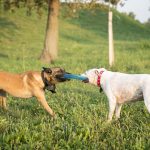Introduction: In her comprehensive exploration, Debra M. Eldredge, DVM, delves into the intricate world of a dog’s constant licking behavior. Acknowledging the varied reasons behind this habit, she emphasizes the importance of understanding when, where, and how a dog licks to discern the underlying causes. From affectionate gestures to potential health issues, Eldredge sheds light on the diverse aspects of dog licking and offers insights into managing this behavior for a happy and healthy canine companion.
Common Reasons for Excessive Licking:
- Pain or Injury:
- Licking joints, hips, stifles, or carpus may signal pain or injury.
- Veterinary consultation is crucial for proper diagnosis and treatment.
- Infections and Parasites:
- Yeast infections in feet, groin, or nails may trigger constant licking.
- Flea infestations can lead to chewing behavior.
- Veterinary examination required for accurate diagnosis and treatment.
- Self-Grooming and Mat Relief:
- Dogs with short, tight coats may lick as part of self-grooming, addressing uncomfortable mats.
- Regular grooming appointments can alleviate constant licking habits.
- Social and Submissive Behaviors:
- Dogs lick other dogs’ ears to indicate infection.
- Puppy licking of adult dogs’ mouths can signal submission or anxiety.
- Licking may express affection towards other dogs or humans.
- Exploration and Scent Gathering:
- Dogs use licking to explore the world, transfer scent molecules, and gather information.
- The vomeronasal organ in the mouth aids in scent detection.
- Dogs licking floors or air are likely capturing faint odors of food, people, or animals.
Addressing Excessive Licking:
- Veterinary Intervention:
- Persistent licking indicating pain or health issues requires prompt veterinary attention.
- Diagnosis and appropriate treatment are essential for the well-being of the dog.
- Behavioral Considerations:
- Recognize and differentiate between natural exploration and obsessive licking.
- Fear-free trainers or veterinary behaviorists can assist in identifying anxiety-related causes.
- Preventing Lick Granulomas:
- Excessive licking can lead to lick granulomas, requiring preventive measures.
- Antibiotics, anti-inflammatories, Elizabethan collars, and anti-anxiety medications may be recommended.
- Severe cases might necessitate surgical intervention.
- Balancing Natural Behavior:
- Allow dogs to engage in natural licking behavior for exploration and enjoyment.
- Consult professionals if obsessive licking causes concern or anxiety in the dog.
Conclusion: Debra M. Eldredge advocates for a nuanced understanding of a dog’s constant licking behavior, emphasizing the multifaceted nature of this habit. From health considerations to natural exploration, dog owners are encouraged to observe and interpret their dogs’ licking patterns. With a balanced approach involving veterinary care, behavioral insights, and preventive measures, Eldredge guides readers toward fostering a harmonious relationship with their furry companions.


